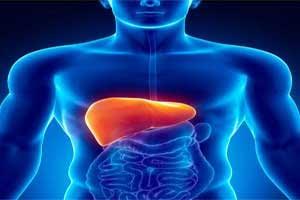- Home
- Medical news & Guidelines
- Anesthesiology
- Cardiology and CTVS
- Critical Care
- Dentistry
- Dermatology
- Diabetes and Endocrinology
- ENT
- Gastroenterology
- Medicine
- Nephrology
- Neurology
- Obstretics-Gynaecology
- Oncology
- Ophthalmology
- Orthopaedics
- Pediatrics-Neonatology
- Psychiatry
- Pulmonology
- Radiology
- Surgery
- Urology
- Laboratory Medicine
- Diet
- Nursing
- Paramedical
- Physiotherapy
- Health news
- Fact Check
- Bone Health Fact Check
- Brain Health Fact Check
- Cancer Related Fact Check
- Child Care Fact Check
- Dental and oral health fact check
- Diabetes and metabolic health fact check
- Diet and Nutrition Fact Check
- Eye and ENT Care Fact Check
- Fitness fact check
- Gut health fact check
- Heart health fact check
- Kidney health fact check
- Medical education fact check
- Men's health fact check
- Respiratory fact check
- Skin and hair care fact check
- Vaccine and Immunization fact check
- Women's health fact check
- AYUSH
- State News
- Andaman and Nicobar Islands
- Andhra Pradesh
- Arunachal Pradesh
- Assam
- Bihar
- Chandigarh
- Chattisgarh
- Dadra and Nagar Haveli
- Daman and Diu
- Delhi
- Goa
- Gujarat
- Haryana
- Himachal Pradesh
- Jammu & Kashmir
- Jharkhand
- Karnataka
- Kerala
- Ladakh
- Lakshadweep
- Madhya Pradesh
- Maharashtra
- Manipur
- Meghalaya
- Mizoram
- Nagaland
- Odisha
- Puducherry
- Punjab
- Rajasthan
- Sikkim
- Tamil Nadu
- Telangana
- Tripura
- Uttar Pradesh
- Uttrakhand
- West Bengal
- Medical Education
- Industry
Effective therapies for liver damage come closer

London: In a major advancement towards therapies for patients with liver damage, scientists have developed a new technique for growing Liver Cells from stem cells that is cost-effective and could be adapted for mass production of clinical grade cells.
The process involves growing cells on defined materials - without the need for animal products - which makes therapies safer for use in people, the scientists said.
Liver cells have already been used as therapies for patients with liver damage with some success. At the moment, donor organs are the only source of cells.
Growing liver cells from stem cells could offer a limitless supply for patient therapies, but the conditions currently used to grow these cells are not amenable to mass production.
Existing methods also rely on the use of animal products derived from tumours, which means that the cells produced in this way cannot be given to patients.
"The development of a defined process to deliver better quality liver cells from clinical grade stem cells is a significant advance. The next step will be to assess their suitability for human use in the appropriate pre-clinical models," said one of the researchers Dave Hay from University of Edinburgh in Scotland.
The new technique for growing the cells uses synthetic material instead of animal products.
The process involves synthetic versions of naturally occurring molecules called laminins.
Laminins are part of the supportive scaffold that surrounds cells and shapes the complex structure of a tissue.
The team found that growing stem cells on laminins turned them into organised liver cells more efficiently than previous methods.
The process involves growing cells on defined materials - without the need for animal products - which makes therapies safer for use in people, the scientists said.
Liver cells have already been used as therapies for patients with liver damage with some success. At the moment, donor organs are the only source of cells.
Growing liver cells from stem cells could offer a limitless supply for patient therapies, but the conditions currently used to grow these cells are not amenable to mass production.
Existing methods also rely on the use of animal products derived from tumours, which means that the cells produced in this way cannot be given to patients.
"The development of a defined process to deliver better quality liver cells from clinical grade stem cells is a significant advance. The next step will be to assess their suitability for human use in the appropriate pre-clinical models," said one of the researchers Dave Hay from University of Edinburgh in Scotland.
The new technique for growing the cells uses synthetic material instead of animal products.
The process involves synthetic versions of naturally occurring molecules called laminins.
Laminins are part of the supportive scaffold that surrounds cells and shapes the complex structure of a tissue.
The team found that growing stem cells on laminins turned them into organised liver cells more efficiently than previous methods.
Next Story


